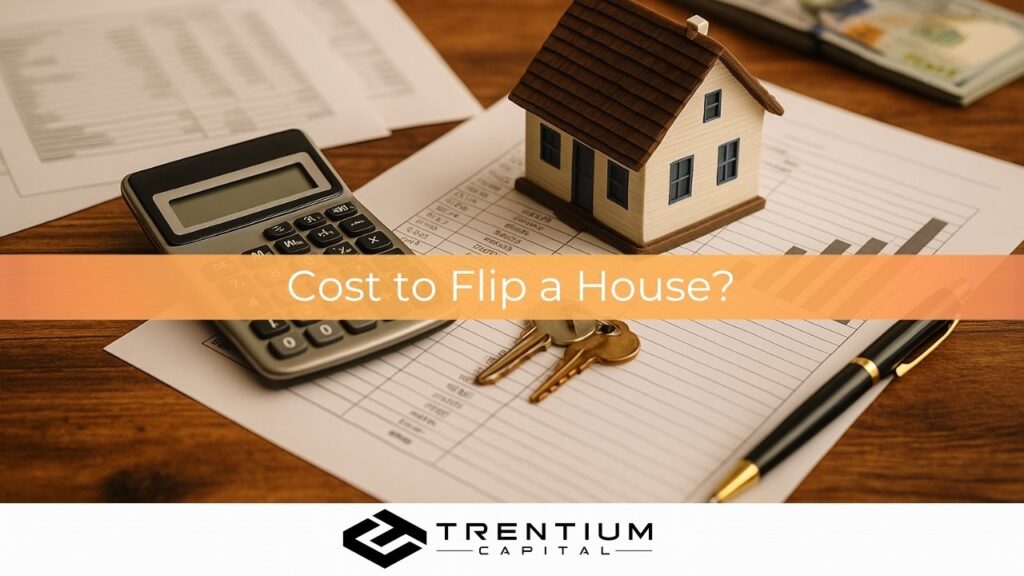Flipping a house is one of the most talked-about ways to build wealth in real estate, but do you know what it costs to pull off a successful flip? While HGTV may make it look simple, real estate flipping is a sophisticated game of numbers, timing, and precision. A dream flip can become a financial flop if you lack the proper knowledge and budgeting strategy.
This complete guide will explain the actual cost of flipping a house. From renovation and holding costs to hidden expenses and sales strategies, this article gives you the clarity and insights you need to approach your next investment confidently. Whether you’re a first-time flipper or a seasoned pro, knowing the expenses involved can be the difference between profit and loss.
The Real Cost of Flipping a House
The cost of flipping a house can vary widely depending on factors such as location, the condition of the property, your renovation plan, and how long it takes to sell. On average, the cost of flipping a house, excluding the purchase price, ranges from $20,000 to $70,000. This includes renovation, holding, financing, and selling costs. These numbers can spike significantly if the property has major structural issues or is in a high-cost market.
Understanding that every flip is different is essential. For instance, a cosmetic fixer-upper may only need paint and staging, while a distressed property could require roof repairs, plumbing updates, and complete system overhauls. Your profit will depend on how well you manage these variables, control timelines, and maximize your resale value.
Acquisition Costs: More Than Just the Purchase Price
While the initial purchase price of the property is a major component, it is only the beginning. Acquisition costs include title insurance, escrow fees, transfer taxes, agent commissions, and closing costs. These can quickly add up to thousands of dollars. In competitive markets, you may face bidding wars that drive up your investment before renovation begins.
Don’t overlook inspection costs if you can inspect the property before purchase. Skipping this step can lead to unforeseen repairs that destroy your profit margin. For properties purchased through auctions or distressed sales, where inspections aren’t allowed, it’s essential to factor in contingency costs for unexpected issues.
Renovation Costs: The Largest Budget Component
Renovation expenses are the most significant and variable part of a house flip. These include contractor labor, materials, permits, appliances, paint, flooring, lighting, and landscaping. Depending on the scope, renovation costs can range from minor cosmetic updates to full gut remodels.
Professionals use the “$1,000-a-day” rule of thumb, which states that a $20,000 renovation should take around 20 working days. Delays in labor, material shortages, or poor planning can cause this estimate to balloon, adding more to your holding and financing costs. To stay on budget, constantly create and stick to a detailed renovation plan. Obtain multiple quotes, check references, and communicate regularly with your contractors.
Holding Costs: The Silent Profit Killer
When you take ownership of a property, the clock starts ticking. Every day without a sale increases your holding costs, including loan interest, property taxes, homeowner’s insurance, utility bills, and even HOA fees if the property is in a managed community. These recurring costs accumulate quickly, especially if your renovation is delayed or the market slows down.
In addition, “forgotten” expenses like trash removal, lawn maintenance, pest control, and mail forwarding can creep into your budget. Though they seem minor, they impact presentation and perception when it’s time to sell. Efficient project management and tight timelines are essential to reduce these carrying costs and protect your profit.
Marketing & Selling Costs
After your renovation, the final phase is selling the property, where many flippers make or lose their margin. Effective marketing helps you attract buyers quickly and command top dollar. This includes professional real estate photography, virtual staging, detailed online listings, social media ads, and open houses.
You’ll likely pay real estate agent commissions (5–6%), closing costs, and any buyer incentives. The longer your property sits on the market, the more these costs increase. Working with a skilled real estate agent who understands your market and knows how to market flipped homes can help you sell faster and maximize your return.
The 70% Rule: Your Flipping Profit Formula
The 70% rule is a popular industry formula for preventing overpaying for investment properties. It states that you should never pay more than 70% of a property’s after-repair value (ARV) minus renovation costs.
For example, if a home’s ARV is $300,000 and you estimate $50,000 in repairs, 70% of $300,000 is $210,000. Subtracting $50,000 in repairs gives you a maximum purchase price of $160,000. Sticking to this rule helps ensure a safe margin for profit, especially in fluctuating markets. While not a hard rule, it’s a valuable starting point for budgeting and deal evaluation.
Time and Scale: The Hidden Levers of Profit
The faster you can complete a flip, the more money you save and the less risk you carry. Large-scale flips involving structural repairs or high-end finishes may bring in more money but come with longer timelines and greater exposure to market changes. On the other hand, smaller cosmetic flips typically yield faster returns with fewer surprises.
Continually assess the time and complexity of each project honestly. Choose flips that match your current capacity, financial cushion, and experience level. Never let ambition outpace your preparation.
Due Diligence: Protecting Your Investment
Performing thorough due diligence before and during a flip is essential. Before committing to a deal, home inspections, contractor walk-throughs, and renovation estimates should happen. Tools like CompanyCam allow teams to share real-time updates on repair progress, ensuring everyone stays informed and aligned throughout the process.
If a property doesn’t allow inspections (such as in auction scenarios), approach cautiously. In those cases, assume worst-case repair costs to avoid underestimating the investment needed.
The Value of Trusted Contractors
Your contractors are your most important asset during a flip. Hiring the wrong crew can delay your timeline, increase costs, and produce subpar workmanship. Get at least three bids, check licenses and references, and choose professionals with a track record of working on investment properties.
It is crucial to maintain open communication throughout the renovation. Regular check-ins and milestone inspections help catch mistakes early and keep the project on track.
Sell Smart, Stay Organized
Once your flip is ready, your focus shifts to presentation and price. Work with a knowledgeable agent to price the home competitively based on comps, market trends, and your renovation upgrades. Don’t overprice the longer it sits, the more you lose.
Track every expense meticulously. This helps you calculate profit accurately and provides valuable records for tax deductions and capital gains reporting. Consult a CPA who specializes in real estate to understand your obligations and opportunities.
Need Fast Funding for Your Next Flip?
Trentium Capital is here to help you bring your house flipping dreams to life. We provide fast, reliable, and flexible funding solutions for real estate investors.
With Trentium Capital, you get:
- Competitive interest rates
- Streamlined application and approval process
- Funding for purchase, rehab, and holding costs
- Personalized support from professionals who understand real estate
👉 Apply today and secure the capital you need to flip with confidence. Whether starting small or scaling big, Trentium Capital has your back.



